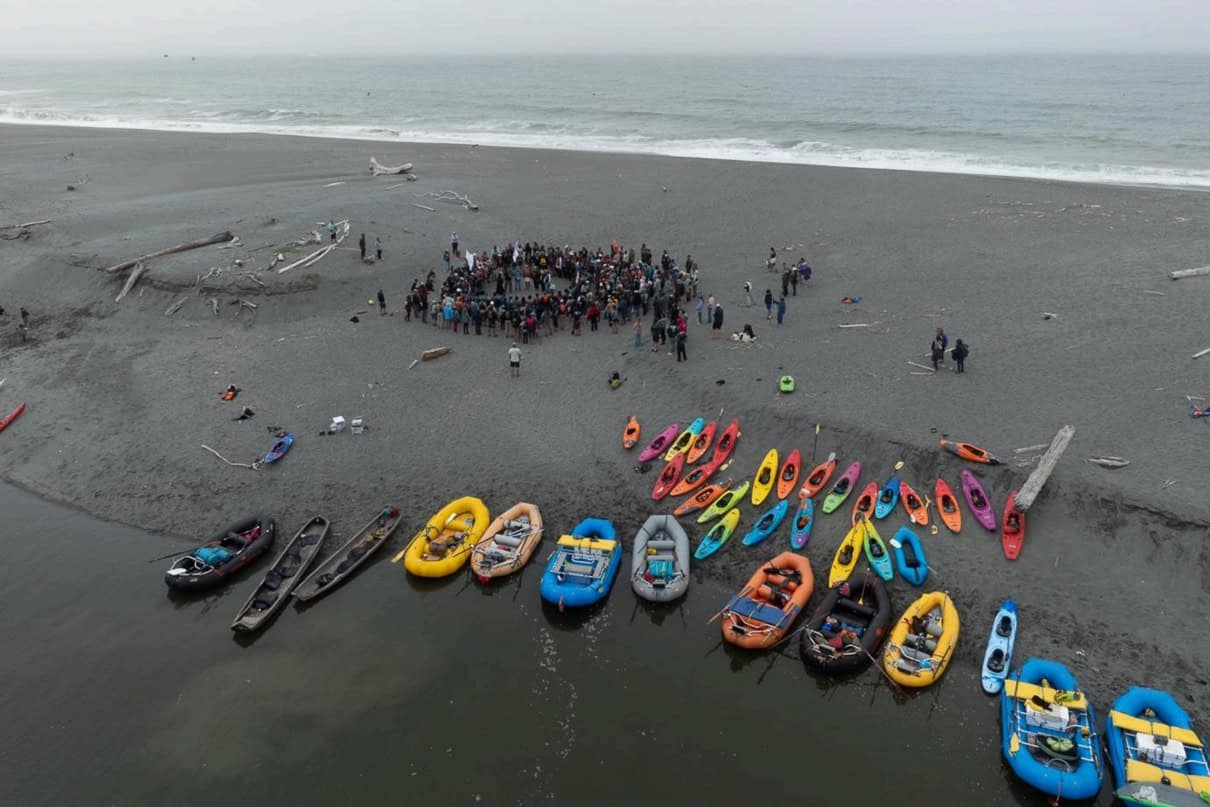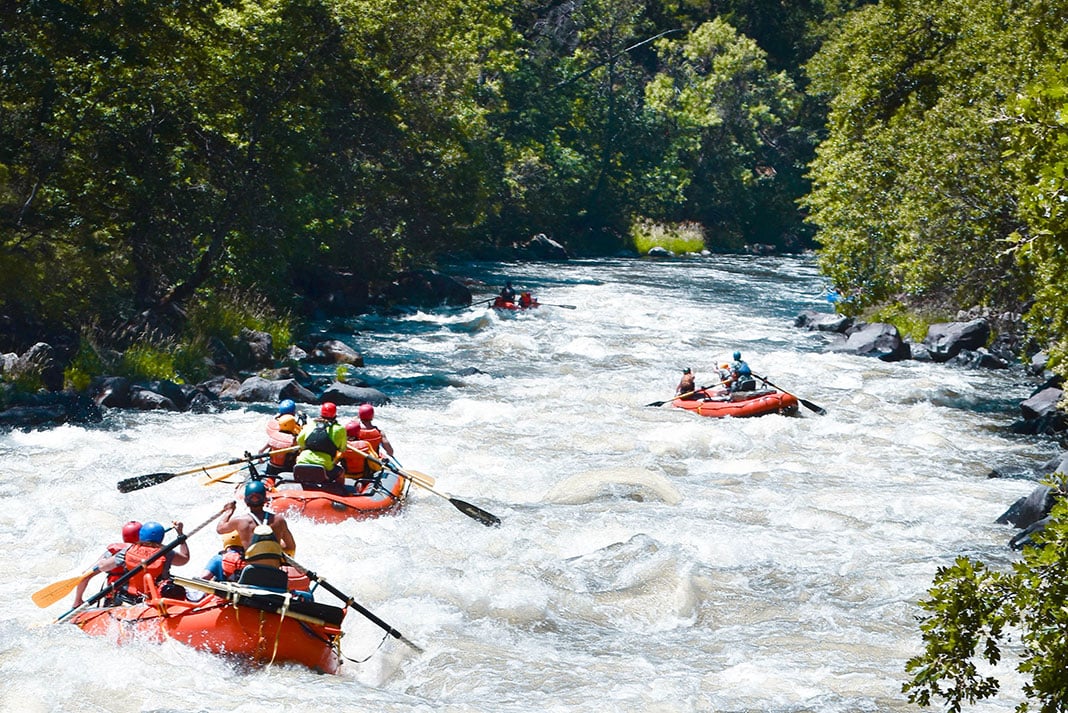On July 11, 2025, a team of Indigenous teenagers from the tribes of the Klamath Basin completed a historic first descent of the undammed Klamath River. The 310-mile route winds through southern Oregon and northern California. The descent celebrated the removal of four hydroelectric dams on the Klamath River, now free-flowing for the first time in over a hundred years. The Klamath River dam removal project was the largest dam removal in history.
First source to sea descent of the newly free-flowing Klamath
This first source to sea descent of the free-flowing Klamath serves not only as a celebration of the dam removals, an environmental success largely spearheaded by Indigenous activists, but also a highly symbolic reclaiming of the waterway and meaning of the phrase “first descent”.
“We’ve really grappled with this [the term first descent] a lot, recognizing that our river’s been a highway for water transit since time immemorial, canoes have existed from the top of the headwaters down to the mouth at Requa,” Danielle Frank, Director of Development and Community Engagement for Rios to Rivers and member of the Hoopa and Yurok Tribes told Paddling Magazine in Fall 2024.
View this post on Instagram
The team arrived at the mouth of the Klamath River on July 11, and is made up of eighth through 12th graders who have trained on the McKenzie, Salmon, Smith and Trinity Rivers as well as the Bio Bio in Chile. Training was completed as part of the Paddle Tribal Waters Academy, a collaboration between Rios to River’s Paddle Tribal Waters program and World Class Academy, and training included developing whitewater kayaking and river safety skills while carrying full-class loads and studying an Indigenous-informed curriculum. Preparation for the trip took three years.
“I feel so proud to have completed this trip, and am feeling grateful for the support of my family and the fact that I got to honor my grandma’s legacy in her fight for dam removal,” Ke-Get Omar Dean V, 18, a member of the Yurok Tribe, shared in a press release from Rios to Rivers. “We got to complete this journey because of the people that came before us and ensured a free-flowing river.”

The new free-flowing Klamath River
The Klamath River dam removal project restores nearly 400 miles of habitat for salmon. In addition to hopefully reviving that vital salmon habitat, the dam removal project also brings relief to Indigenous communities along the banks of the Klamath dependent on salmon and the river – communities that suffered while the dams were in place including the Yurok, Karuk, Hoopa, Shasta and Klamath.
Once the third-largest producer of salmon in the contiguous United States according to American Rivers, the health of the Klamath River, the health of salmon and the health of the Indigenous communities along the Klamath are closely tied. Indigenous communities on the banks of the dammed Klamath were cut off from traditional healthy food sources and live in one of the largest food deserts along the West Coast, Frank shared.
The first of the four hydroelectric dams came down in October 2023 and Iron Gate Dam, the final dam, came down in September 2024. Rehabilitation of the Klamath River is far from complete, but in October 2024 Chinook salmon were observed in the Klamath basin for the first time in over a century.
Paddle Tribal Waters youth carry a tribal flag at the mouth of the Klamath River on June 11. Feature Image: Courtesy Eric Boomer / River Roots










So so beautiful
What a journey in the river as well as in the heart ❤️
This is fantastic! Great article.
The first day of paddling was all smiles after we sang songs and prayed some of us parents got to paddle the first leg of the headwaters it’s amazing I’m so proud of my daughter and all the team Native and non Native mentors paddle as a family can’t wait to be with them again
WOW. An immense and wonderful journey. May the wind be at their backs.